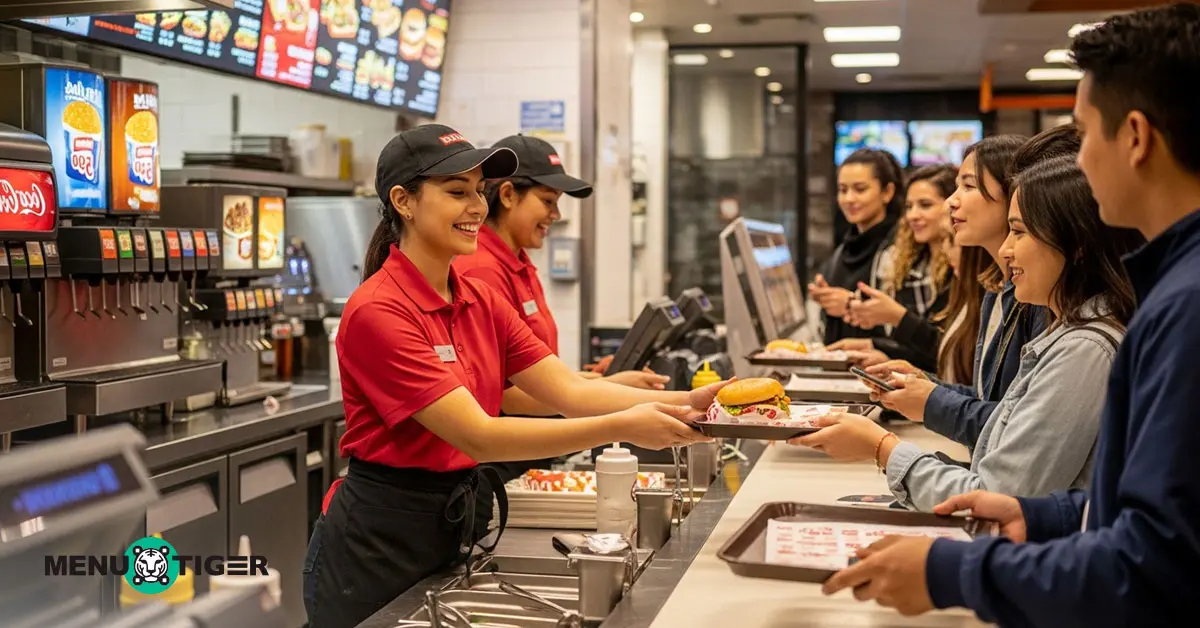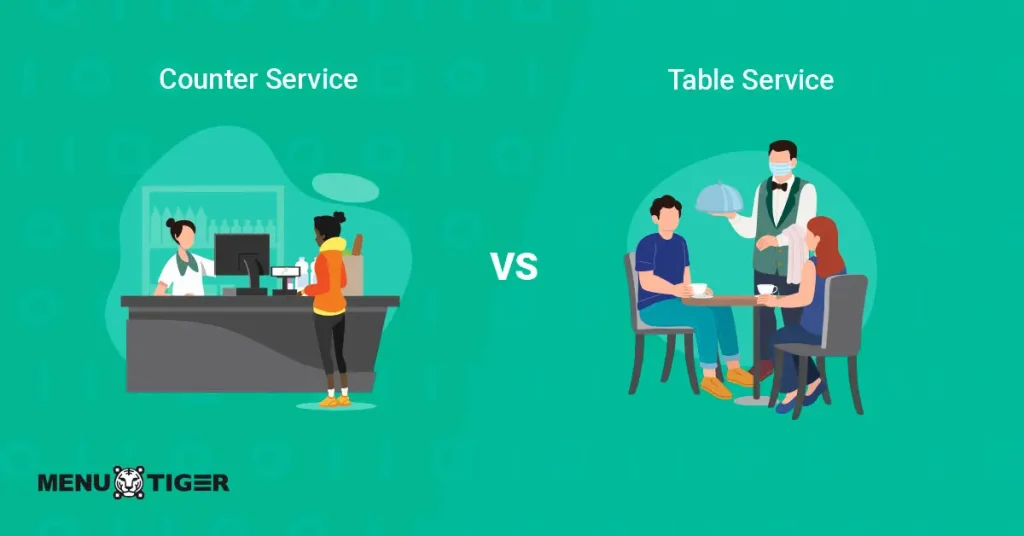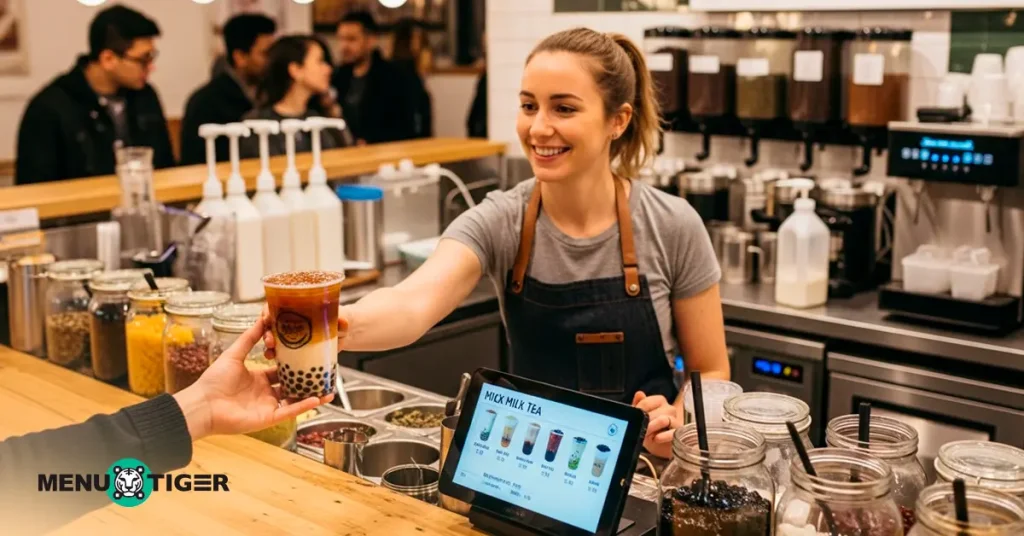
What is a counter service restaurant? (Definition, Guide, and Benefits)
Last Updated: October 31, 2025
The biggest fast food chains have been adapting counter service since day one, because it is the indispensable, cost-saving engine driving the entire quick-service restaurant (QSR) industry.
The idea behind this service is the key to global profitability. It fundamentally shifts work from the staff to the customer.
However, as the world evolves, so too must service.
This article will provide you with all the essential information you need to know about this service model and demonstrate how a modern order management system helps.
What is a counter service?
The idea of a counter service is an operation where customers handle the ordering, paying, and often the receiving of their food or items, usually by walking up to a designated counter or till.
Instead of a dedicated waiter coming to customers’ tables to take orders, bring food, and hand the check, customers take those steps themselves.
In McDonald’s, this is very common. A customer can order through a self-serve kiosk or directly at the counter.
The reason they maintain a predominantly counter-service model despite its massive profits is that their entire identity since its inception with the “Speedee Service System” in 1948, has been built on quick-service.
And according to the research of The Rail, a hospitality and restaurant industry publication, you are seeing counter service more and more often because of three main reasons: speed, money, and control.
What’s the difference between counter service restaurants vs. table service

Basically, these two types of service are opposite to each other. Here’s why:
Counter service
In counter restaurant service, the customer handles most of the service tasks, such as:
- Placing the order
- Making the payment
- Receiving the order
- Handling self-serve elements (e.g., getting water or placing additional orders)
- Clearing up after eating
Table service
In table service, the staff handles most of the service tasks while the customer remains seated, such as:
- Receiving customers at the entrance
- Taking the customer’s order
- Processing the payment at the table
- Delivering the order to the table
- Handling additional orders and customer requests
- Clearing the table after the meal
Which is better for your restaurant?
It really depends on the type of restaurant you have.
There is no single “better” option; the right choice is the one that aligns with your restaurant’s concept, goals, and customer expectations.
For example, if your restaurant is fine dining, casual dining, or upscale casual, then table service is the preferred option, since customers come to relax, enjoy a more elegant experience, and appreciate the ambiance rather than just quickly grab a meal.
On the other hand, if you have a small café, a start-up restaurant, or a quick-service restaurant spot, counter service might be the way to go.
Note: When choosing a service style, always make sure your restaurant is compliant with the Americans with Disabilities Act (ADA). At the same time, aim to cater to diners with different preferences to provide an inclusive experience and uphold the highest standards of hospitality.
Examples of restaurants that offer service in the counter

1. McDonald's
Mcdonald's, an international fast-food chain provides counter service and self-order kiosks for dine-in, takeaway, and drive-thru, and is known for its basic branding speed and reliable consistency worldwide.
2. Starbucks
Starbucks, a popular coffeehouse, lets customers order and pay at the counter or via the mobile app for quick pickup.
3. Subway
Subway is the biggest restaurant brand in U.S and their service allow diners customize their sandwiches at the counter while watching them being freshly prepared. Meals are ready for immediate pickup, making it a convenient choice for those who want personalized, fast-service sandwiches.
4. KFC
This is famous for its fried chicken. KFC offers quick counter and drive-thru service, allowing customers to get meals efficiently. The chain is known for signature chicken recipes, combo meals, and family-friendly service around the world.
5. In-N-Out Burger
In-N-Out Burger provides counter and drive-thru service. The chain focuses on quality ingredients, a simple menu, and efficient service, earning a devoted following in the areas it operates.

The advantages of service at the counter
1. Systematic upselling at the counter in restaurant
If your offer a service counters, there are always people in the cashier, so it’s a good idea to train your staff on upselling tips and ideas.
When a customer places an order on a kiosk, it's the digital “Would you like fries with that?” because the computer system is programmed to always suggest extras like desserts or meal upgrades.
The restaurant loves this because it reliably makes them more money, and it’s why customers' total bill is often a little higher than they planned.
2. Reduce service charge and labor cost
This setup benefits both the restaurant and the customers. With fewer staff needed to take orders or serve food, the restaurant can significantly cut down on labor costs.
As a result, the restaurant menu pricing is often lowered compared to full-service restaurants — giving customers a great deal without compromising on quality.
3. Protect order accuracy
If a customer orders on a kiosk or an app, they see their order on the screen and can fix mistakes immediately.
This means they are much more likely to get exactly what they asked for.

4. Lessen social anxiety
Some customers feel shy or pressured when ordering face-to-face. With a self-service kiosk, they can take their time, explore the menu, and customize their order exactly how they want — no rush, no pressure
5. Faster service
The entire process is built to be quick. Customers don't have to wait to be seated or wait for the bill. They order and get their food fast, which is perfect for someone on a break or in a hurry.
Disadvantages of offering service at the counter
6. Impact the dining experience
Customers miss out on the friendly, personalized service of a waiter. No one is checking in or refilling drinks. It can feel like a simple transaction rather than a relaxing meal.
7. Queue and wait time issues
During busy lunch times, all customers have to stand in the same long line to order. Instead of waiting comfortably at a table, they're often standing in a crowded space, which feels more frustrating.
8. Increased noise and congestion

Since everyone is ordering, waiting, and picking up their food in the same spot, the front area of the restaurant gets loud and crowded.
This makes it hard for customers to enjoy their meal or have a conversation quietly.
9. Lower perceived value
Even if the price is a little lower, customers might feel the meal is less valuable because they have to do some of the work themselves (like ordering on a machine or fetching their own food). They get a great product but feel the overall experience is worth less without table service.
10. Cleanliness maintenance challenge
Since customers are usually expected to clear their own trays or bus their own tables, the dining area can get messy quickly if staff can't keep up.
The customer might walk into a dining room with dirty tables and overflowing trash cans, which makes the whole place feel less appealing.
Smart strategy to improve service in your restaurant
When it comes to service, you can’t just stick to one type, right? Exploring different types of service allows you to cater to a variety of customer needs.
The question is: how can we have a single solution that offers multiple types of service, meets different customer needs, suitable for any type of restaurant, and remains cost-effective?
The simple answer to that question is a restaurant ordering system that unifies the digital ecosystem.
Here’s how a restaurant order system can help:
QR code menu
The QR code menu is the smart alternative for kiosks. Customers simply scan the code, browse the menu, place their orders digitally, and pay.
No staff is needed to take orders manually, which reduces wait times and allows customers to be served more efficiently.
It’s important to have an ADA compliant, and one of the biggest advantages is that it caters to different types of users, keeping diversity and inclusivity in mind.
This types of menu can include images and text, is compatible with voice readers, touchless and hygienic, and even provides ingredient warnings for customers with strict dietary needs.
Kitchen display system
A kitchen display system (KDS) is a smart device in your kitchen that connects directly to your digital menu.
Everything works in a systematic process: once a customer places an order, it automatically appears on the kitchen display, including any special instructions or modifiers. No more paper tickets and mess-up penmanship.
Cook can then start preparing the order, often with built-in timers to ensure everything is cooked perfectly.
Once the order is ready, customers can pick it up at the counter.
Restaurant waiter call button

Even in restaurants that promote self-serve, service isn’t limited to just one style. There are always guests like the elderly, pregnant, or people with disabilities (PWDs) who may need extra assistance while dining in.
With a restaurant waiter call button, customers can request help with just a tap, without staff having to constantly monitor them.
For customers, it’s convenient and stress-free. For staff, it allows them to focus on genuine hospitality, like assisting diners who need attention or ensuring a smooth and enjoyable dining experience for everyone.

The future of service is smart, not just fast!
As this complete overview shows, the counter service model isn't going anywhere, it's just getting a massive upgrade.
The traditional counter is evolving into the hybrid solution, where speed and efficiency are maximized by the restaurant ordering system.
By automating orders through kiosks, apps, and QR codes, you achieve significant cost savings by minimizing staff time spent on transactions.
The smart money is on the evolved counter-based service model.


